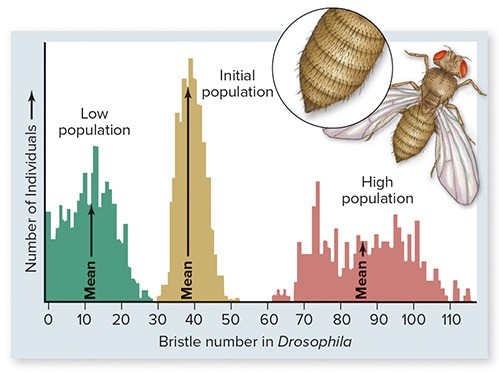In the laboratory, fruit flies (Drosophila) were artificially selected for the number of bristles on their bodies. One population (R) was selected for low numbers of bristles, a second population (S) for high numbers of bristles. In order for the scientists to artificially select Drosophila for their number of bristles,
In order for the scientists to artificially select Drosophila for their number of bristles,
A. they had to induce mutations into their populations of Drosophila.
B. genetic variation had to be present in the population.
C. the number of bristles in each Drosophila had to be random.
D. dramatic mutations had to be produced by the selection.
E. they had to study the population for millions of years.
Answer: B
You might also like to view...
In glycolysis, the product(s) of the enzyme aldolase is (are)
A) beta-hydroxy carbonate. B) dihydroxyacetone phosphate. C) glyceraldehyde-3-phosphate. D) choices A and B only E) choices B and C only
Chimpanzees are considered to be our closest extant relative because
A. they have prehensile tails. B. their genome is 99% identical to the human genome. C. their upper/lower limbs equally account for bearing the body weight. D. they have flat, spreading noses. E. they are a highly social species.
Celiac disease is a condition in which the lining of the small intestine is damaged. Which of
the following is most affected by this disease?
a. villi b. gallbladder c. bile secretion d. salivary glands
Fast neurons as described in lecture require cytoplasmic signal transduction to open an ion channel.
a. true b. false